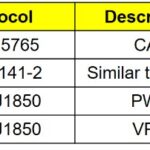The presence of an OBD2 port indicates a car is equipped with OBD2 technology. However, visually confirming this can be tricky. While there isn’t a universal “OBD2” sticker, there are a few key locations and indicators that can help you determine if your car is OBD2 compliant.
One common location to check is under the driver’s side dashboard, near the steering column. Look for a 16-pin connector, often referred to as a DLC (Data Link Connector). This connector is usually trapezoidal in shape and may have a cover. The presence of this connector strongly suggests the vehicle is OBD2 compliant. While a label explicitly stating “OBD2” is rare, you might find a sticker nearby with emissions information or diagnostic trouble codes (DTCs) related to the OBD2 system.
Another potential location for information is the vehicle emissions control information (VECI) label. This label is typically found under the hood, on the radiator support, or near the engine compartment. While not specifically indicating “OBD2”, the VECI label provides details about the vehicle’s emissions system, which is directly related to OBD2 functionality. Look for information about compliance with California or federal emissions standards, often referencing specific OBD regulations.
Furthermore, the owner’s manual can be a valuable resource. It often contains information about the vehicle’s diagnostic system, including whether it’s OBD2 compliant. Look for sections related to emissions, maintenance, or troubleshooting. The manual may also provide a diagram showing the location of the OBD2 port.
In summary, while a specific “OBD2” sticker isn’t common, the presence of a 16-pin DLC connector under the dashboard, information on the VECI label regarding emissions compliance, and details within the owner’s manual can all help you determine if your car is OBD2 equipped. If you’re still uncertain, consulting a mechanic or using an online OBD2 vehicle lookup tool can provide definitive confirmation.

